 Weird Stuff
Weird Stuff  Weird Stuff
Weird Stuff  History
History 10 Legends Whose Last Moments Undid Their Glory
 Health
Health 10 Futuristic Ideas to Treat Common Medical Problems
 Weird Stuff
Weird Stuff Ten Surreal Attempts to Reverse Baldness
 Facts
Facts 10 U.S. Government Contingency Plans for the Unthinkable
 History
History 10 Weird Distractions from the Great Depression
 Movies and TV
Movies and TV 10 Fictional Kings Who Go from Good to Bad
 Food
Food The Fantastic Chemistry Behind Why 10 Popular Foods Taste So Good
 Technology
Technology 10 Futuristic Fungal Technologies
 History
History 10 Not-so-Spooky Events That Also Happened on October 31
 Weird Stuff
Weird Stuff 10 Things So Rare They’ve Only Been Found Once
 History
History 10 Legends Whose Last Moments Undid Their Glory
 Health
Health 10 Futuristic Ideas to Treat Common Medical Problems
Who's Behind Listverse?

Jamie Frater
Head Editor
Jamie founded Listverse due to an insatiable desire to share fascinating, obscure, and bizarre facts. He has been a guest speaker on numerous national radio and television stations and is a five time published author.
More About Us Weird Stuff
Weird Stuff Ten Surreal Attempts to Reverse Baldness
 Facts
Facts 10 U.S. Government Contingency Plans for the Unthinkable
 History
History 10 Weird Distractions from the Great Depression
 Movies and TV
Movies and TV 10 Fictional Kings Who Go from Good to Bad
 Food
Food The Fantastic Chemistry Behind Why 10 Popular Foods Taste So Good
 Technology
Technology 10 Futuristic Fungal Technologies
 History
History 10 Not-so-Spooky Events That Also Happened on October 31
10 Mind-Blowing Attempts At Explaining Time
Time is a weird thing. We don’t all seem to experience it in quite the same way—sometimes it passes quickly, sometimes slowly, and it seems to go by faster and faster the older we get. There have been plenty of theories that attempt to explain just what time is and why it’s so mysterious, and some of them are pretty mind-bending.
10St. Augustine’s Theory Of Mind-Time
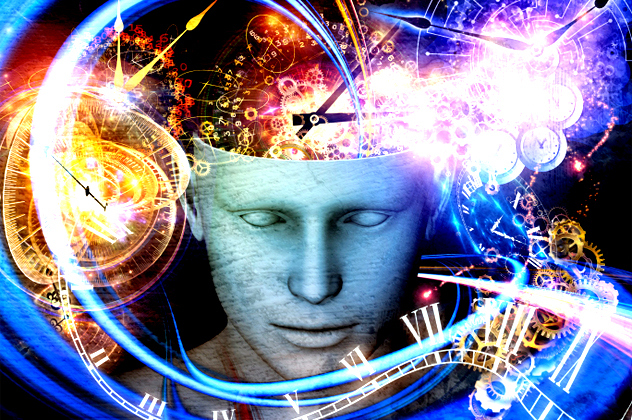
Christian philosopher St. Augustine had a couple of things to say about time. First, he said that time was absolutely not infinite. Time was, according to him, created by God, and it’s impossible to create something that’s infinite.
He also said that time actually exists only in our mind, a bizarre conclusion that all has to do with how we interpret time. We may say that something lasted a long time or a short time, but St. Augustine said that there’s no real way to quantify that. When something is in the past, it no longer has any properties of being anything because it doesn’t exist anymore, and when we say something took a long time, that’s just because we’re remembering it that way. Since we only measure time based on how we remember it, then it must only exist in our memories. The future doesn’t exist yet, so that can’t have any measurable quantities, either. The only thing that does exist is the present (and that’s a complicated concept we’ll get to in a minute), so the only logical conclusion left is that time only exists in our heads.
9The Topology Of Time
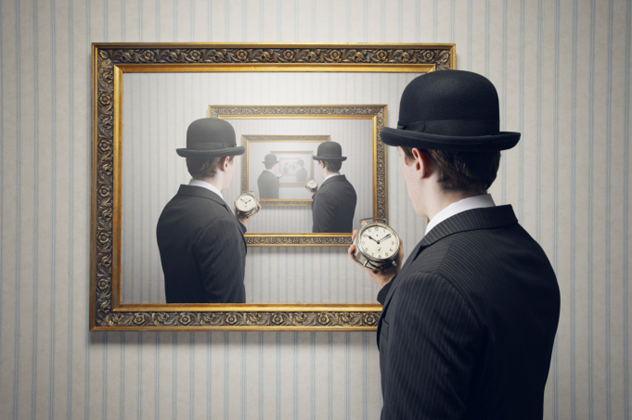
What does time look like? If you try to picture time, do you see it as a straight line that goes on forever? Or do you think of time sort of looking like a clock, going around and around, circling back on itself every day or every year?
Obviously, there’s no right answer, but there are some intriguing ideas about it. According to Aristotle, time can’t exist as a line, at least one with a beginning or an end, even though there must have been a time when, well, time started. In order for there to be a moment in time when time began, there had to be something before that marked its beginning. The same goes for the end of time, he said. In order for the line of time to come to an end, there has to be something after it to mark that particular point as the end of time.
There’s also the problem of how many lines of time are there—is there one line of time that everything travels along together, or are there multiple lines of time that alternately intersect or run parallel to each other? Is time a single line with a lot of branches? Or perhaps moments in the time stream exist independently from other moments. There are plenty of opinions, but no answers.
8The Specious Present

The idea of the specious present deals with the question of how long the present actually lasts. The usual answer, something about it being the “now,” isn’t very descriptive. For instance, when we’re in the middle of talking to someone and we’re in mid-sentence, we’ve already finished the beginning of the sentence and it’s in the past, but the conversation itself is still taking place in the present. So how long does the present actually last?
E.R. Clay and William James refer to this idea as the specious present—the space of time that we perceive as being in the present. They suggest that it can be as short as a few seconds and probably not longer than a minute, but it’s the amount of time that we’re immediately, consciously aware of.
And within that, there’s still a little bit of wiggle room to argue.
It could theoretically have something to do with how long a person’s short-term memory is—the better that is, the longer the present is. There’s also the idea that it’s just a matter of instantaneous perception, and the second it’s passed and you’re relying on your short-term memory, a moment is no longer a part of the present. Then there’s the problem of the present and something of an extended present, which is where the specious present comes in. The present must have no length of actual time, because if it did, part of that time would be in the past and part would be in the future, contradicting itself. So the specious present tries to explain the present as an interval of time that has duration, yet is a separate thing from the objective present.
7Shorter People Experience ‘Now’ Sooner

It sounds weird, but it makes sense. This theory was put forward by a neuroscientist named David Eagleman, and it’s called temporal binding.
It’s built around the idea that we experience the world in packets of information that are gathered by our senses and processed in the brain. Different parts of the body, even if they receive information at the same time, take slightly different amounts of time to get to the brain. Say you’re texting someone, and you hit your head on a telephone pole at the same time that you stub your toe on the same pole—in theory, the information collected from your head injury will get to your brain faster than the information from your toe will, but you’ll think you feel them at the same time. That’s because the brain defaults to a sort of sensory organizational chart that puts things in an order that makes the most amount of sense to us.
That delay in processing information is what makes short people more “in-the-moment.” A shorter person is actually experiencing a more accurate version of time, because there’s less of a delay in information getting to the brain.
6Time is Slowing Down—And We Can See It
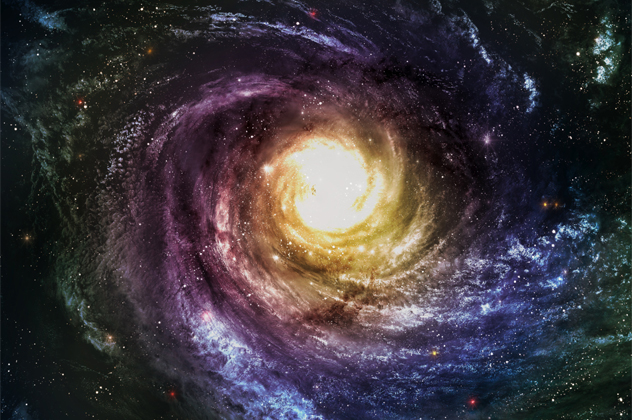
One of the long-standing problems of physics has been the existence of dark energy. We can see its effects, but we have no idea what it is. A team of professors from the University of the Basque Country, Bilbao, and the University of Salamanca in Spain have suggested that all our efforts to find and define dark energy have been in vain simply because there’s no such thing. Instead, they say, all the effects of dark energy can be explained by the alternate idea that what we’re really seeing is time slowing down on its way to an eventual stop.
Take the astronomical phenomenon of red shift. When we see stars that have a light wavelength that’s red, we know that they’re accelerating. The group of Spanish professors is now explaining the phenomenon of the universe’s acceleration as being the result not of the presence of dark energy, but simply an illusion created by time slowing down. Light takes a good amount of time to reach us, and by the time it does, time has slowed down for us, making it look as though everything is accelerating away. The time-slow is extremely, immeasurably minute, but given the vastness of space, it’s magnified over the mind-boggling amount of distance, meaning that we can see it when we look to the stars.
They also say that, gradually, time will continue to slow until it just stops completely. The universe will freeze the way that it is for all of eternity—but don’t worry, that’s billions of years away, and Earth will no longer be around by then.
5Time Doesn’t Exist
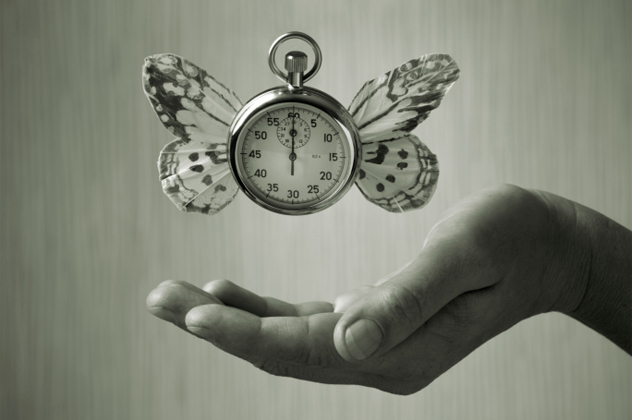
There’s also the idea that time doesn’t exist at all, which was wholeheartedly argued in the early 1900s by a philosopher named J.M.E. McTaggart. According to McTaggart, there are two different ways we can look at time. The first, called A-Theory, states that time has an order and flows along a path; in this version of time, it’s possible to organize things as they happen. There’s a progression of events from the past to the present to the future.
B-Theory, on the other hand, states that the passing of time—and time itself—is a complete illusion, and there is no way to objectively assign events a particular order. This version of time is seemingly supported by our memories, which tend to recall events as individual pockets of time, not as an overall flow or passage of time.
Take both these theories into account, and it proves that time doesn’t exist because in order for it to exist, there needs to be a continuous change in events, the world, or in circumstances. The B-Theory is by its own definition not a reference to the passage of time, and there is no unfolding change. Therefore, time doesn’t exist.
But if the A-Theory is accurate, that too suggests that time can’t exist. Take a moment in time—say, your 21st birthday. At one point, this was a point in the future, but this same moment will someday exist in the past. Since a moment can’t be past, present, and future, McTaggart says that theory is contradictory and therefore impossible—along with time itself.
4Four-Dimensionalism And Block Universe Theory

The theory of four-dimensionalism and block universe theory are connected by the idea of time as an actual dimension. In four-dimensionalism, all objects exist in four dimensions rather than three, and the fourth dimension, time, can be thought of in terms of the other three dimensions. Block universe theory imagines the entire universe as a dimensional block made up of slices of time. It has width, depth, and height, and for everything and every event that has a measurable duration, there are essentially layers of time that form its whole. Every person is a four-dimensional object that exists in layers of time—there are layers of time for infancy, for childhood, for adolescence, and so on. Time doesn’t, in itself, exist in such a way that there’s a past, present, and future, but each point within the block is any one of those three things in reference to other points of time.
The block universe theory also leaves room for the idea of infinite time, both past and future, by saying that the dimensional block can extend into infinity in either direction. What it doesn’t leave room for is change in the future—since the occurrence of the events in the block of time already exist, the future has already been decided.
3The Oddball Effect

Occasionally, we hear stories of someone who’s in a life-threatening or terrifying situation in which they swear that time slows down. It’s often when we’re faced with an event that’s happening on a massive scale, or when something completely unexpected occurs; it’s such a widespread phenomenon that there’s been a lot of discussion on whether or not we’re really experiencing time slowing down to allow us to process all the information we’re being confronted with.
Researchers first looked at what it would mean if time really did slow down for us. We would be able to see things in greater quality, and we’d be able to pick out greater details as images flashed by us. The brain tends to blend stimuli together into one event, as long as that information is received less than 80 milliseconds apart. So if time slows, we should recognize stimuli as separate events.
Participants in the study were shown a series of flashing numbers to determine the point at which the brain overcame time and made it impossible to distinguish the different numbers in the series. Once they were tested for their baseline, they were then asked to do the same thing while being dropped from a 46-meter (150 ft) tower. Then, they were also asked to watch other people fall from the same tower, and estimate how long those falls were in comparison with their own.
When asked to time their own fall, participants estimated that it was about 36 percent longer than the falls of the people they were watching. That, coupled with the results showing that people weren’t any better at identifying numbers when placed in a situation that made them theoretically experience slowed time, suggests that it’s not the moment that’s slowed down for us, but our recollection of it. While it would have an amazing practical benefit if we could experience slowed time, it’s now hypothesized that it’s something in our memories that makes terrifying events seem to last forever.
2Khronos, Kronos, and Father Time

Before Greek philosophers took a crack at explaining time, there was a mythological explanation, and that explanation includes the original figure of Father Time.
Before there was anything, there were the primordial gods Khronos and Ananke. Khronos was the god of time, imagined as part man, part lion, and part bull. Ananke, a serpent, wrapped around the egg of the world in a symbol of eternity. Khronos also shows up in Greco-Roman mythology, where he’s depicted as standing within the wheel of a zodiac. Ungoverned by time, he can be either an old or young man, much like today’s images of Father Time and the baby of the new year.
Khronos was the father of the titans and is often used interchangeably with Kronos, who was also associated with time. Kronos was the titan responsible for de-throning and castrating his father, and who would later be killed by his own son, Zeus. It was Khronos who was responsible for the progression of time through the seasons and through the years from the very beginning, but the things that happened to men and women within that time were the domain of someone else.
We largely relate to time by what happens to us in its passage. We grow up and then we grow old. That life cycle of man wasn’t the domain of time, but of the Moirai. Klotho spun the thread of life, beginning the cycle for everyone. Lakhesis measured how long the thread would be, while Atropos cut the thread. The Moirai would foretell future events as well, suggesting that destiny had already been written. Although the gods controlled the passage of time throughout the seasons, the Moirai were in charge of things happening within it, such as Persephone’s return to her mother Demeter in the summertime or her months with her husband during the winter.
1We’re Not Good At Telling Time
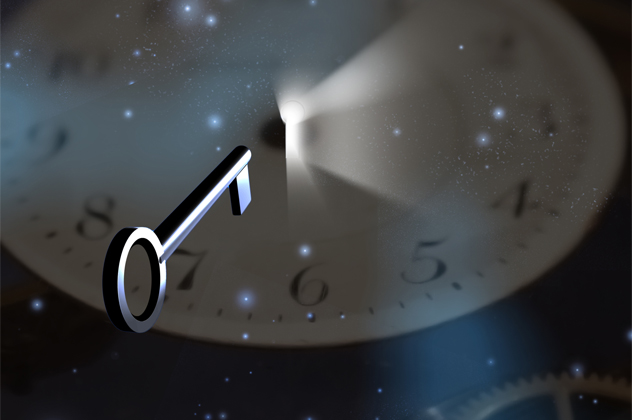
Time seems like it would be one of the easiest things to wrap your head around when it comes to discussing the physics of space, time, dimensions, and everything that goes along with them. We’re not really that good at even telling time, though, and we have the track record to prove it.
On one hand, there’s sidereal time, which is the time measured by the placement of the stars and the Earth’s rotation. That obviously varies quite a bit, though, so we also have the solar day. That’s based on the amount of time it takes the Earth to make a single rotation on its axis, which is also pretty varied. That’s why we need to take a solar year and average out the length of the rotations to come up with our system of time.
Earlier in the 20th century, though, scientists and astronomers discovered that the Earth’s rotation was slowing down. They created Ephemeris Time to account for that, which was phased out in 1979.
Then there was Terrestrial Dynamical Time, which was more precise and is based on International Atomic Time. This was discontinued in 1991, when it was technically renamed Terrestrial Time.
And if keeping track of time zones seems complicated, even today the positions of the stars and other solar bodies are used in conjunction with Terrestrial Dynamical Time, but with the rest of the world on Universal Time as its practical standard, there needed to be a way to convert the two—that’s Delta T.
In other words, we just have no idea what to do with time, even though we use it and live it every day. The most apparently straightforward of all questions regarding time isn’t straightforward at all.








